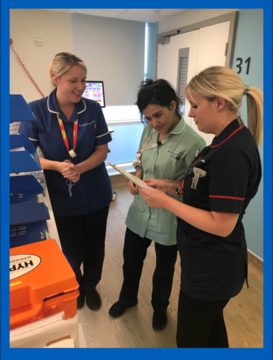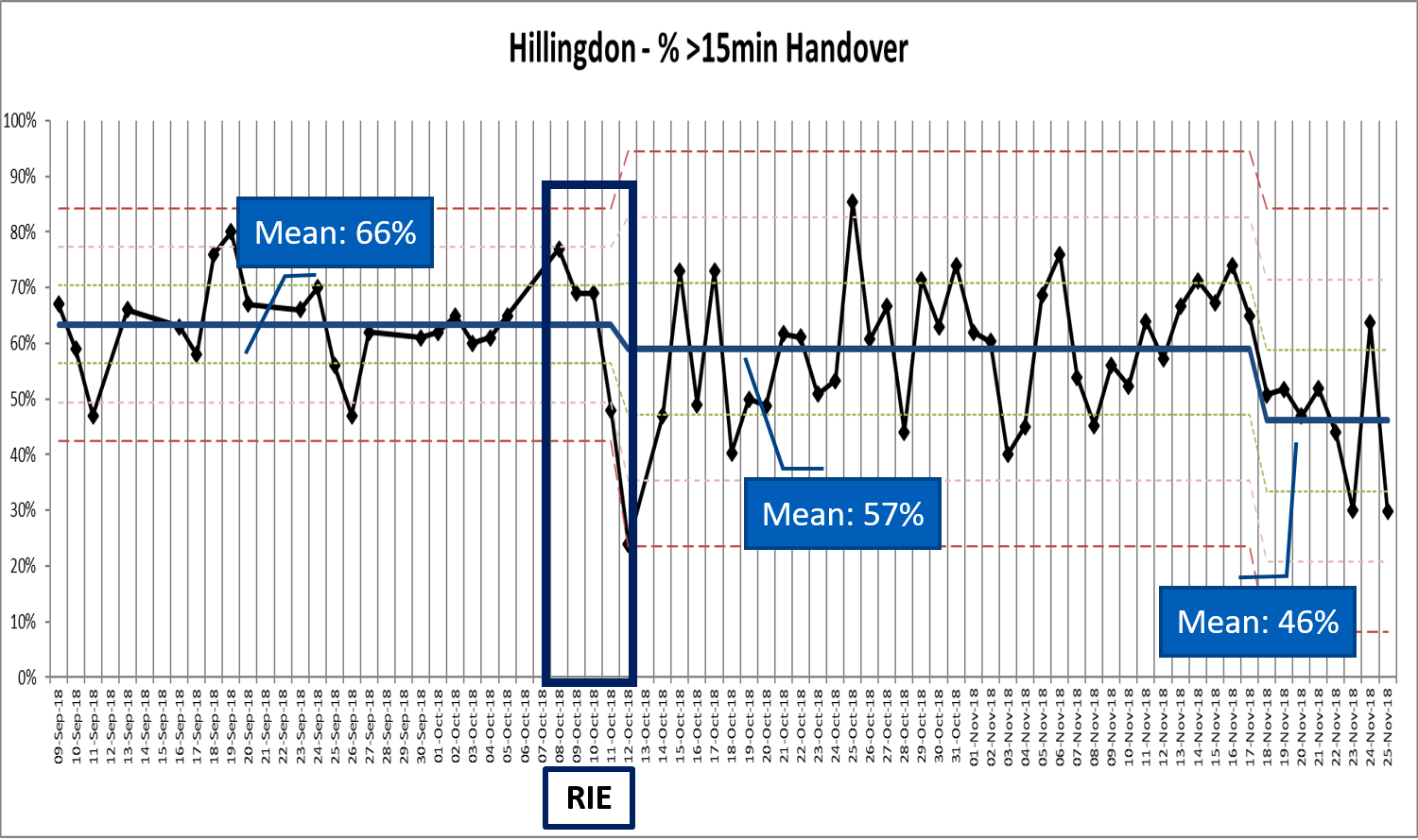Hillingdon Hospital had been facing a number of challenges around timely ambulance handover and high numbers of patients waiting in corridors awaiting assessment. The turning point came when the ED team started to think of the impact of these delays on patients who were still waiting in the community – literally starting with the patient and working backwards
ED Specialist Nurse Kirsty Farrell spoke to ECIST Improvement Manager Nick Holding, who facilitated, about her experience of the rapid improvement event.
Every day we would have a large volume of patients in our corridors waiting for a bed. Often these patients would require treatment and further investigations and the corridor is not the environment for this. On top of this, patients would often complain that they had a long wait in the community for an ambulance and this was often due to our prolonged wait to offload in the department.
Leading up to the event, I realised that this was going to be a great opportunity for the team in ED to have a say and be involved in changes. I began to see how this could also help build morale and give ownership back to the staff. Something that really stood out for me was the enthusiasm from all the staff involved. It was great that we had a variety of skills and experience involved which allowed for all voices to be heard.
As a leader in the department I found the whole experience empowering and gave me a real sense of enthusiasm. Sometimes we think that we must come up with all the answers, and there is at times an expectation of this from others. The rapid improvement event really changed this thinking and transferred the power to the teams who do the work every day, giving them the chance to influence decisions that directly affect them and their patients.
The results during the 3 days were fantastic. To see the hospital go from the 4th worst performing trust in London to the second best performing trust in such as short space of time was amazing. Not only that but there was a significant reduction in the number of ‘lost’ paramedic hours. However, I think the main result from this event was the change in mindset of staff, thinking about patients who weren’t even in the department yet and the impact on them of the delays we were causing.

The motivation it has given staff has been great to see. The passion and drive of all the staff since the improvement event has meant staff can see that we can make a change in the department has led to staff generating new ideas and not feeling they cannot suggest anything because they are not in a management position.
The team at last feel empowered that this is ‘our’ department and that we can make changes and try new things to see if they work. Its lovely to see something that has worked well, and staff are constantly looking for things they can do to make it even better. There is now a change in mindset, where it’s just not acceptable for patients to wait in a queue. We have a much better understanding that if ambulance crews are waiting on our department, they are not available to see patients in the community who need help.
Staff are still looking at ways to make things better for the department and patients. This is just the start for us.


